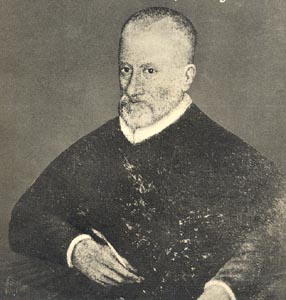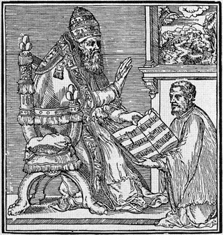With the Protestant reformation in full force throughout Europe, the Roman Catholic church began to look for ways to return the church to a more sincere form of Christian piety. The culmination of this movement, known as the Counter-reformation, was the Council of Trent which was convened in Rome in 1545 and stretched on for nearly twenty years. Over the years, the council offered up opinions on all aspects of the life of the church from monastic strictures to the proper use of music in the church.
As can be seen from earlier Papal bulls, such as John XXII's Docta sanctorum of 1323, religious folk had expressed consternation with the increasing corruption of traditional chant for many years. They viewed this corruption in terms of either extravagance or secularism.
Extravangance was primarily related to a love of complexity both of ornamentation (within the music and by the performers) and in composition. The leaders of the church at the time (and to some extent also today) felt that intricate musical riddles and counterpoint served to make the religious text unintelligible. Secularism exhibited itself through the use of secular melodies (such as L'Homme Arme) as the cantus firmus of Mass settings and through a growing tradition of adding instruments, by nature secular, into the sacred space. Some cardinals advocated eliminating all counterpoint and with it polyphony and returning instead to purely Gregorian chant, which was still being composed and performed.
It is said that at this point in the deliberations, a composer and singer in the Pope's exclusive schola cantorum, Giovanni Pierluigi da Palestrina, came to the rescue of music. The legend recounts that Palestrina composed a Mass for Pope Marcellus that redeemed the art of music in the eyes of the church. Though this is likely apocryphal, Palestrina was held up to future generations as a composer who suceeded in respecting the integrity of the sacred texts. Hear some of the composition that "saved" music.

Giovanni Pierluigi da Palestrina (1525? - 1594)
